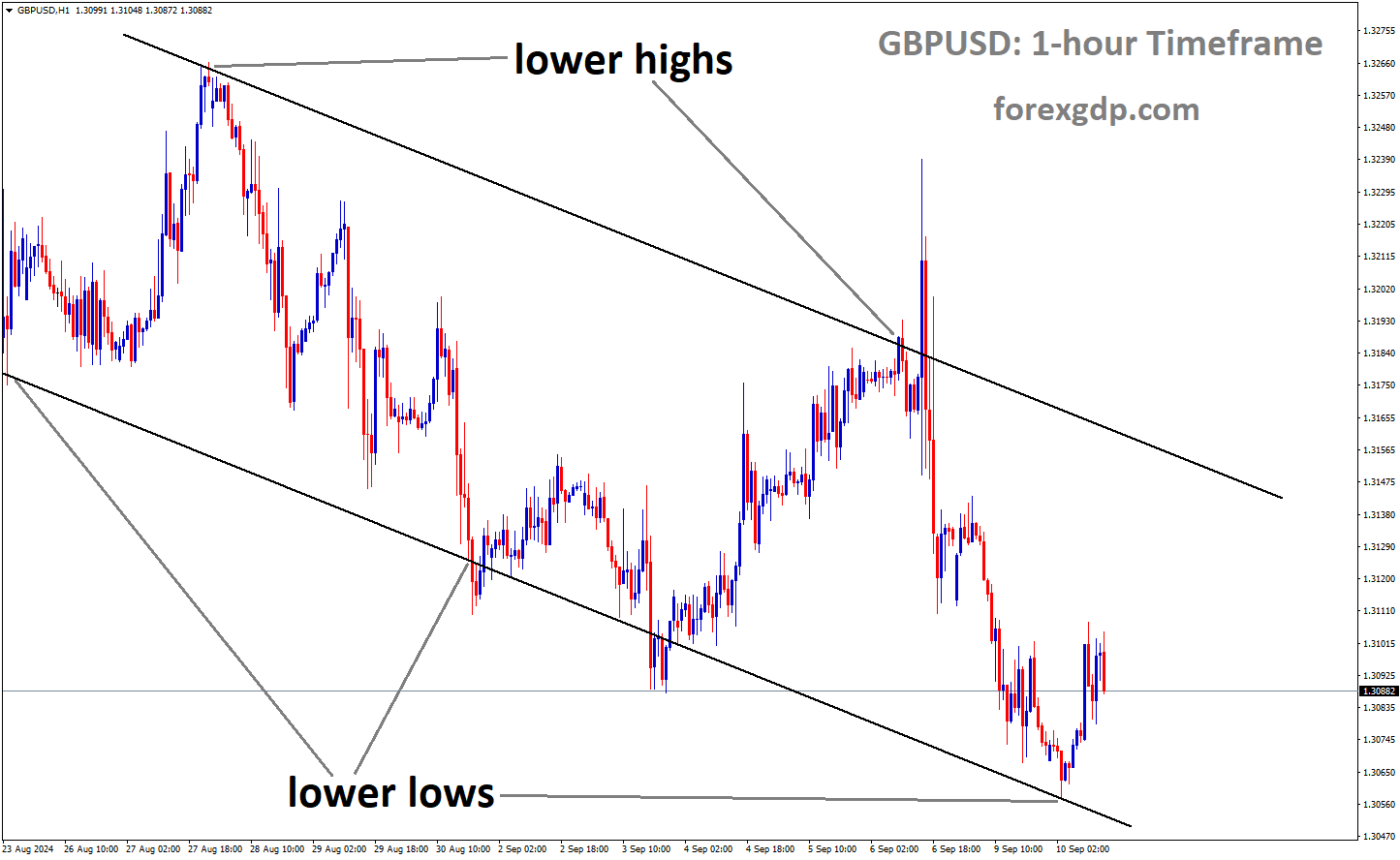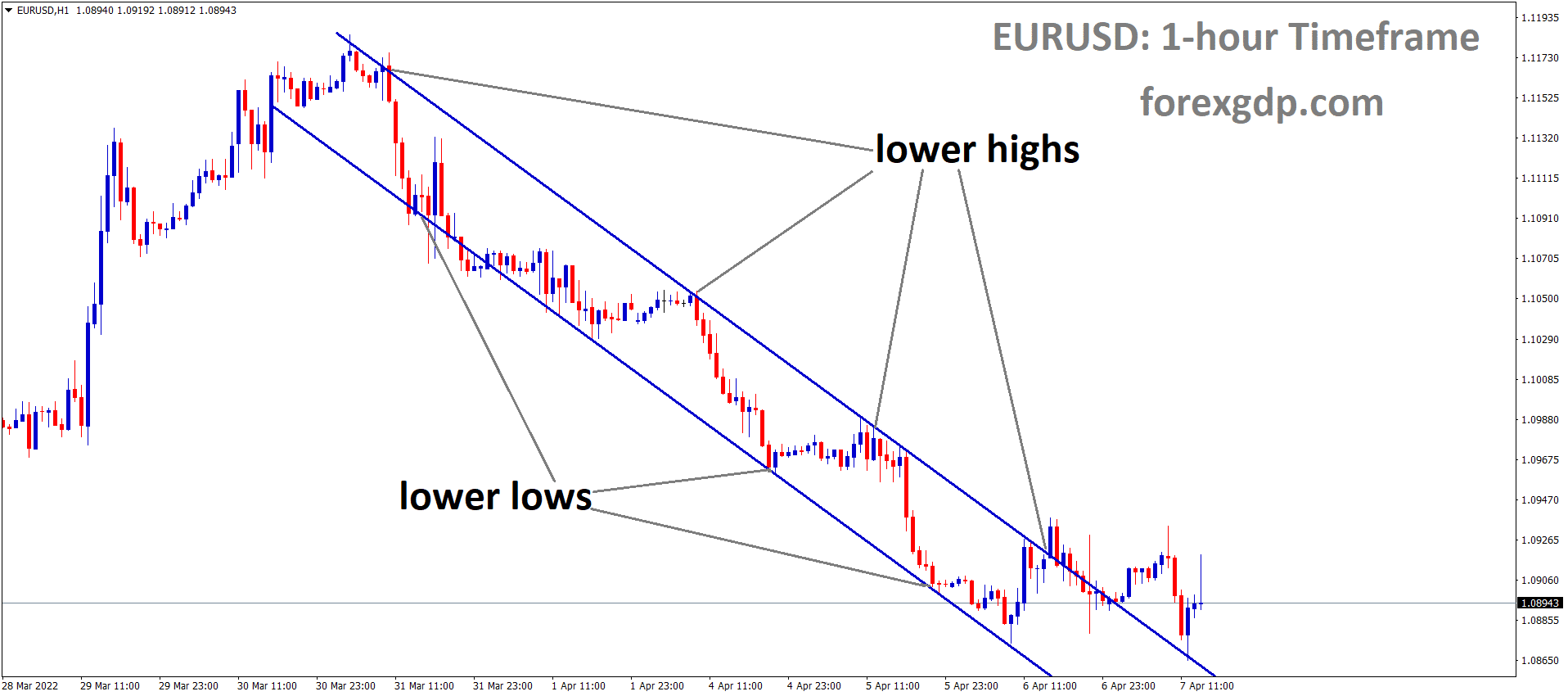USD: US Core PCE inflation remains stable at 2.8%, defying expectations
The US PCE Index price came at 2.7% in the March month versus 2.5% printed in the February month and 2.6% estimate. Core PCE index excluded Food and Energy prices came at 2.8% versus 2.6% expected. On a Monthly basis, 0.30% increase in both PCE and Core PCE index . In the March month, US Consumer spending grow by 0.80% and Personal income increased by 0.50%. So Spending is higher than income is seen in this reading. So US FED rate cut in this year is more doubtful by the economists view. US Dollar jumped after the data released.
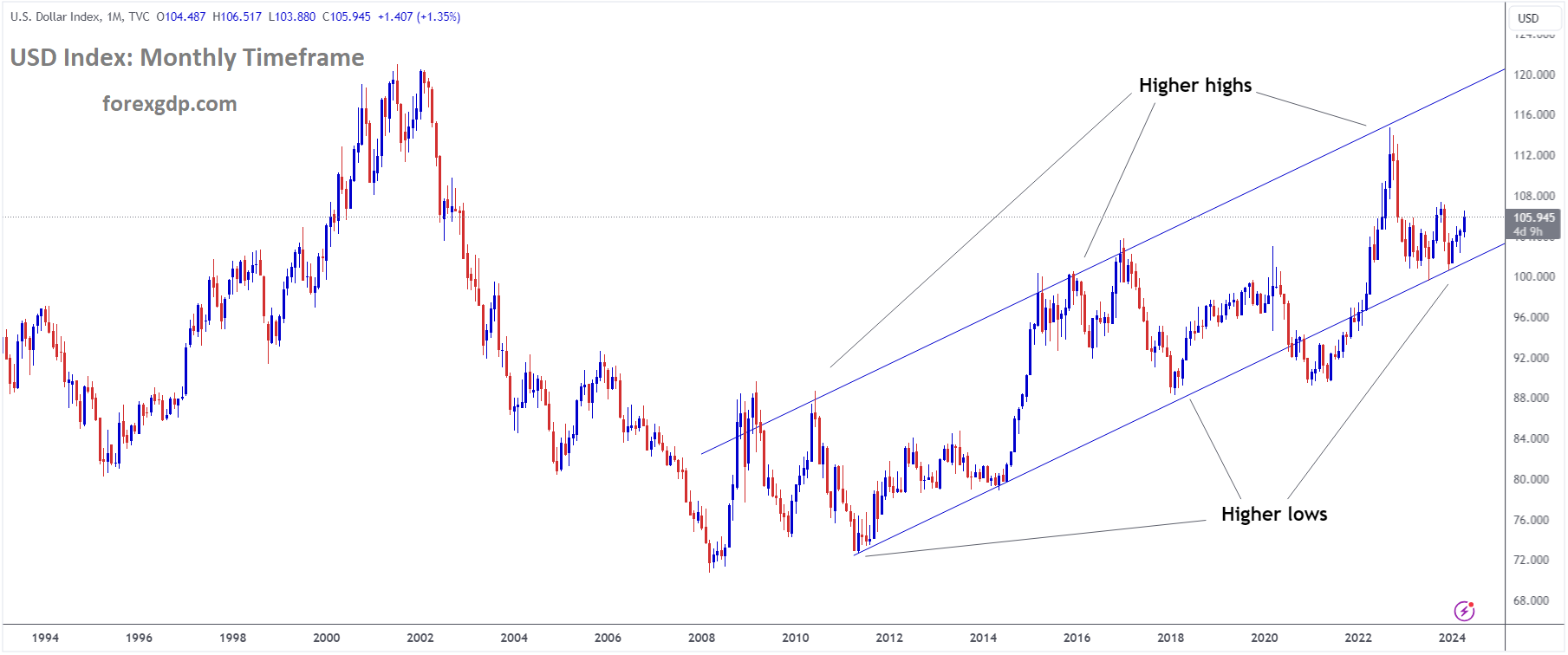
USD Index Market Price is moving in Ascending channel and market has rebounded from the higher low area of the channel
On Friday, the US Bureau of Economic Analysis released its report on inflation, measured by the change in the Personal Consumption Expenditures (PCE) Price Index. In March, inflation surged to 2.7% on a yearly basis, up from 2.5% in February, surpassing market expectations of 2.6%.

The core PCE Price Index, excluding volatile food and energy prices, maintained its stability at 2.8% on a yearly basis, defying analysts’ projections of 2.6%. Both the PCE Price Index and the core PCE Price Index saw a monthly increase of 0.3%.
Furthermore, the report highlighted a 0.5% monthly growth in Personal Income for March, coupled with a 0.8% rise in Personal Spending.
USD: Fed’s Key Inflation Gauge Surpasses Expectations, Climbs to 2.8% YoY in March
Key Federal Reserve Inflation Gauge Rises to 2.8% in March, Exceeding Expectations
In March, inflation remained resilient, as evidenced by a key metric closely monitored by the Federal Reserve, indicating that price pressures continue to remain elevated.
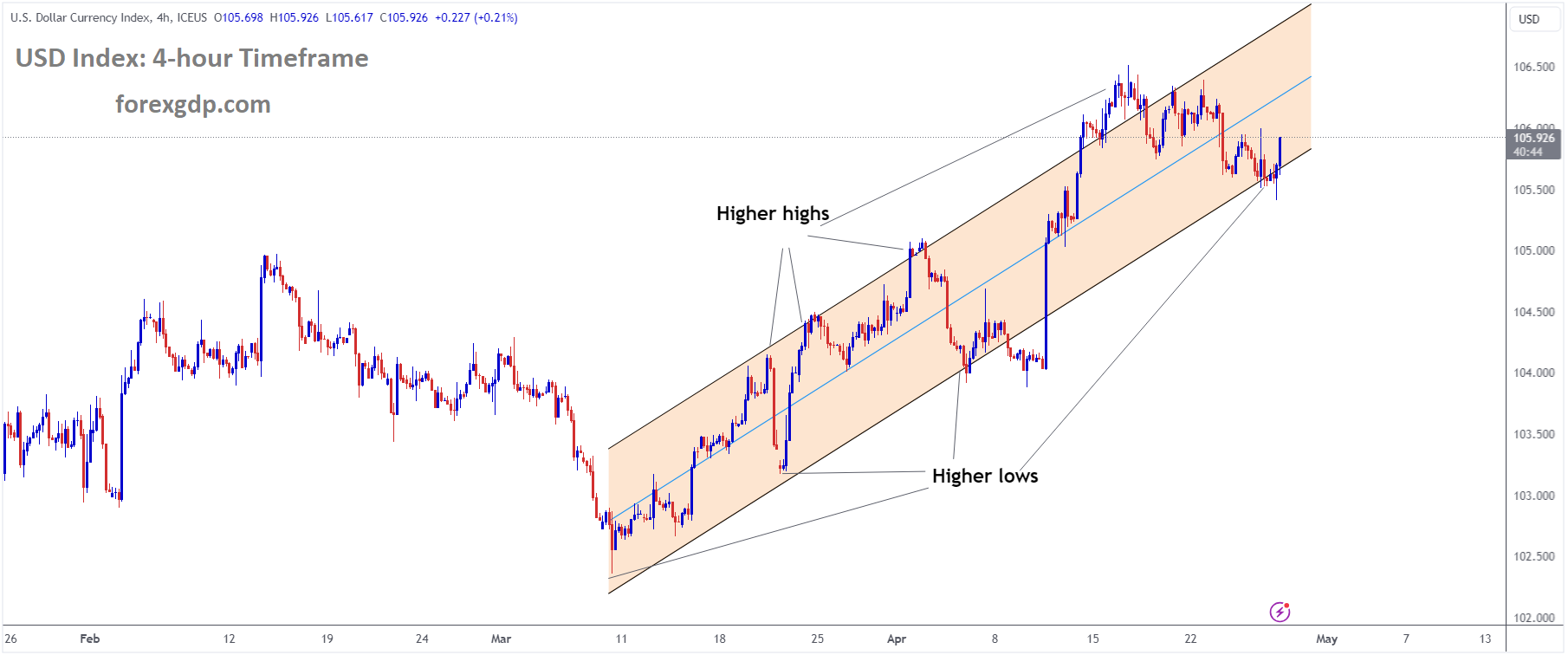
USD Index Market Price is moving in Ascending channel and market has reached higher low area of the channel
According to the Commerce Department’s report on Friday, the Personal Consumption Expenditures (PCE) price index, excluding food and energy, rose by 2.8% from a year ago in March, matching the February figure. This exceeded the consensus estimate of 2.7% from the Dow Jones.
Including food and energy, the overall PCE price index increased by 2.7% compared to the same period last year, slightly above the estimated 2.6%.
Both measures of the PCE price index saw a monthly increase of 0.3%, in line with expectations and consistent with the previous month’s increase.
Market response to the data was relatively muted, with Wall Street expected to open on a positive note. Treasury yields declined, with the benchmark 10-year note reaching 4.67%, down approximately 0.4 percentage points during the session. Futures traders, as indicated by the CME Group’s FedWatch gauge, showed a slightly increased optimism regarding the possibility of two rate cuts this year, with the probability raised to 44%.
George Mateyo, Chief Investment Officer at Key Wealth, commented on the inflation reports, stating that while they were not as concerning as feared, investors should not assume that inflation concerns have been fully addressed, nor should they expect imminent rate cuts from the Federal Reserve. He emphasized that the prospect of rate cuts remains uncertain, and the Fed may require evidence of weakness in the labor market before considering such actions.
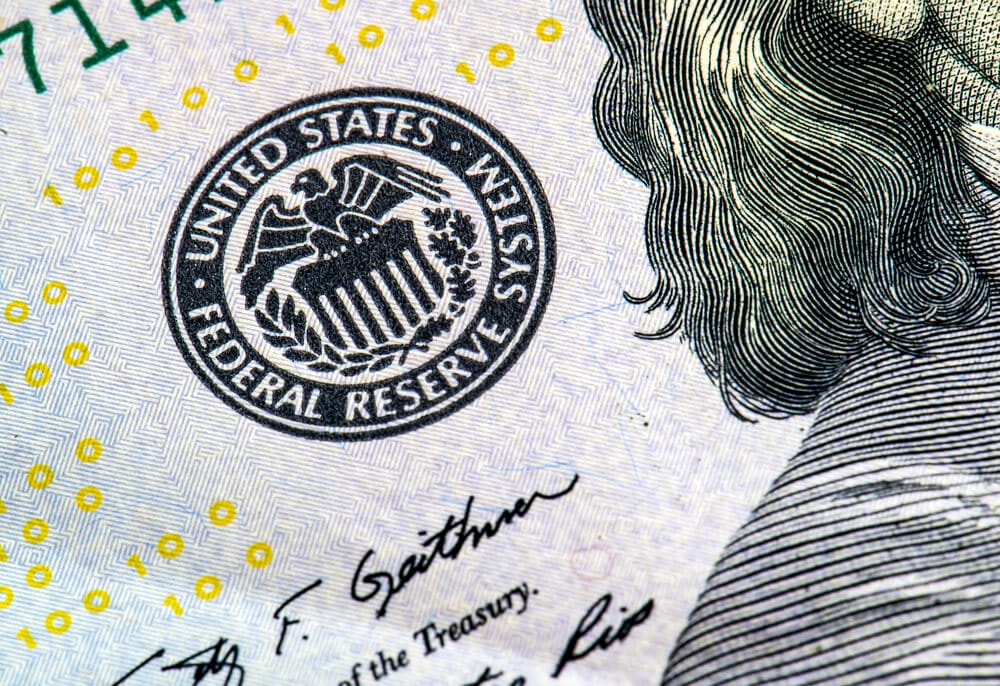
Despite elevated price levels, consumer spending remained robust. Personal spending increased by 0.8% month-on-month, slightly higher than the estimated 0.7%, and consistent with February’s figures. Personal income also saw growth, rising by 0.5%, in line with expectations and up from the 0.3% increase in the previous month.
The personal saving rate declined to 3.2%, down 0.4 percentage points from February and 2 full percentage points from a year ago, indicating that households tapped into savings to sustain spending levels.
This report follows concerning inflation data released on Thursday, likely reinforcing the Federal Reserve’s stance on maintaining interest rates at current levels, at least through the summer, unless there are significant changes in the economic landscape. The Commerce Department’s report on Thursday revealed that PCE accelerated at a 3.4% annualized rate in the first quarter, while gross domestic product growth was just 1.6%, significantly below market expectations.
With inflation persisting for two years and remaining above the Fed’s 2% target, policymakers are closely monitoring data to inform future monetary policy decisions. The Fed relies on the PCE, particularly the core measure that excludes food and energy, as it provides insights into longer-term trends, reflecting changes in consumer behavior.
Services prices increased by 0.4% month-on-month, while goods saw a modest 0.1% increase, indicating a shift in consumer price dynamics since the onset of the Covid pandemic. Food prices experienced a slight decline of 0.1% month-on-month, while energy prices rose by 1.2%.
Over the past 12 months, services prices have surged by 4%, while goods prices have remained largely stagnant, with a marginal increase of just 0.1%. Food prices have risen by 1.5%, and energy prices have increased by 2.6%.
USD: PCE inflation picks up in March: Implications for Fed cuts
PCE inflation surges in March, posing challenges for Fed rate decisions
In March, a key gauge of inflation showed significant acceleration, suggesting ongoing challenges for the Federal Reserve regarding interest rate adjustments.
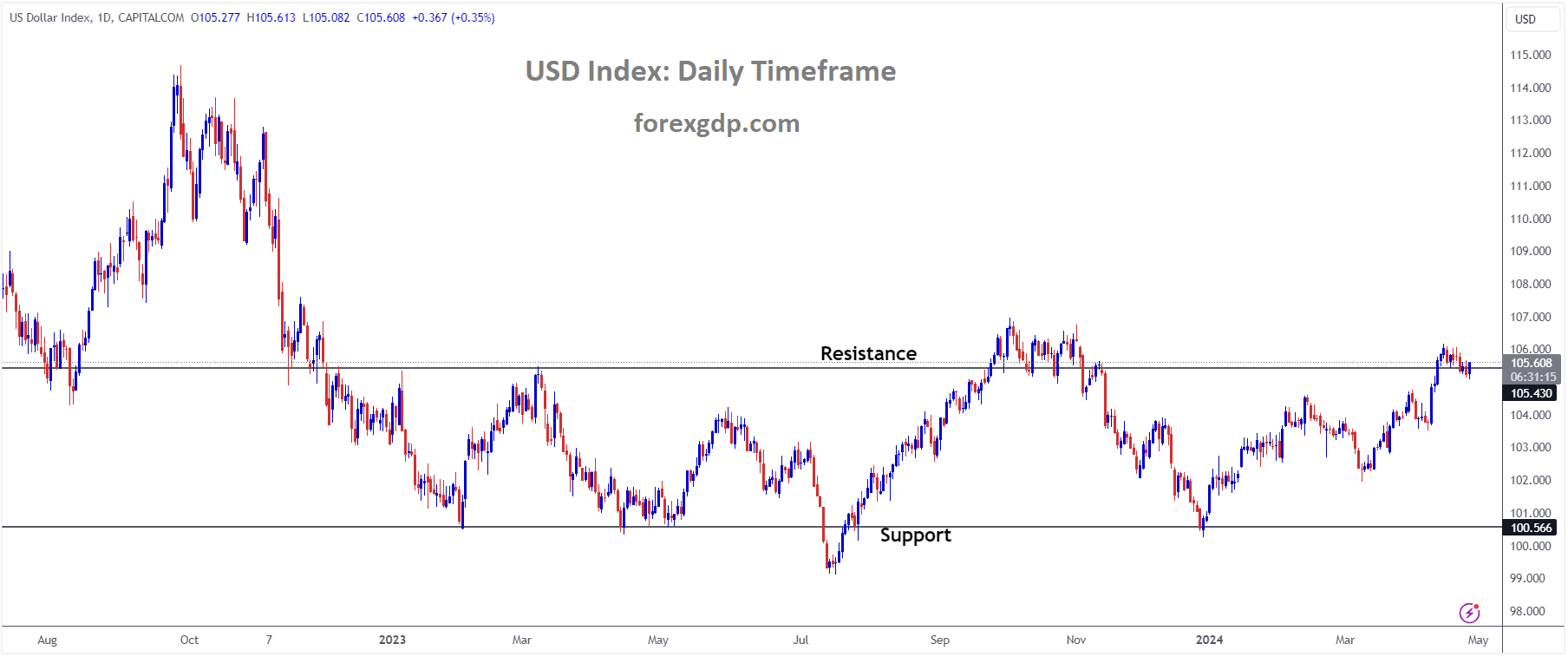
USD Index Market Price is moving in box pattern and market has reached resistance area of the pattern
The Commerce Department’s report revealed that the personal consumption expenditures (PCE) index, which measures consumer prices, rose by 2.7% compared to the previous year. Although this figure was above February’s 2.5% increase, it remained below the 40-year peak of 7% recorded in June 2022. On a monthly basis, prices saw a 0.3% uptick, consistent with the previous month’s advance.
Core PCE inflation, which excludes volatile food and energy prices and is closely monitored by the Fed, maintained its 2.8% annual increase, matching February’s level. This steadiness implies persistent inflationary pressures in the economy.
Despite hopes for a moderation in inflation, the PCE data disappointed, particularly following the prior day’s report on economic growth, which indicated a surge in core PCE inflation to an annualized rate of 3.7% in the first quarter. This stronger-than-expected performance challenges the Fed’s previous stance, as Chairman Jerome Powell had suggested that earlier inflation spikes might have been temporary.
Market Reaction and Implications
Investors reacted calmly to the inflation figures, with the Dow Jones Industrial Average showing a modest increase and Treasury yields declining slightly. The futures market, which previously anticipated multiple rate cuts in 2024, now expects only one reduction in September.
The persistence of inflationary pressures may prolong the Fed’s cautious approach to interest rate adjustments. While goods prices have shown signs of stabilization, services costs have continued to rise, driven partly by escalating wages amid labor shortages.

The Fed’s Dilemma and Future Prospects
The recent data indicate a complex economic landscape. Household spending remains robust, with a significant increase in March, accompanied by a rise in personal income. However, consumers are drawing heavily from savings, suggesting potential financial strain.
Additionally, despite signs of a cooling labor market, net job growth remains strong due to employers’ reluctance to lay off workers. This dynamic could influence inflation trends, with a potential easing expected once labor market softening becomes more pronounced.
Looking ahead, the Fed faces a delicate balancing act between supporting economic growth and addressing inflationary pressures. While some economists anticipate a rate cut in the fall, the timing and magnitude of such actions will depend on evolving economic conditions and inflationary trends.
Don’t trade all the time, trade forex only at the confirmed trade setups
Get more confirmed trade signals at premium or supreme – Click here to get more signals , 2200%, 800% growth in Real Live USD trading account of our users – click here to see , or If you want to get FREE Trial signals, You can Join FREE Signals Now!



